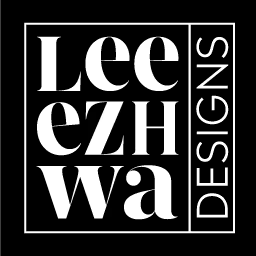The Costume That Fit Too Well
For years, I wore a costume that wasn’t mine. It was made of pressed suits, shiny shoes, and carefully rehearsed elevator pitches. It came with a script, a career ladder, and applause at the right moments. And it fit, at least on the outside.
Inside, though, it itched.
The costume was the corporate version of me. The polished, predictable, compliant version. The version who made quota, smiled in meetings, and followed the unspoken rules. The version everyone else approved of, but that I didn’t recognize in the mirror.
And here’s the scary part: the longer you wear the costume, the harder it is to tell where the fabric ends and your skin begins.
That’s when I realized I didn’t want a costume. I wanted thin skin. My own creative skin, sensitive, vulnerable, authentic, undeniable.
The Problem: Why We Hide in Costumes
It’s easy to blame ourselves for hiding, but the truth is: the system rewards costumes.
- Corporate culture values predictability. A 2018 McKinsey study found that companies with rigid hierarchies scored 30% lower on innovation outcomes compared to those fostering psychological safety.
- Professional identity pressure is real. Harvard Business Review reports that 61% of professionals feel pressure to conform to organizational norms at the expense of authenticity.
- ADHD brains, like mine, are especially prone to masking. Research in Frontiers in Psychology shows that neurodivergent professionals often overcompensate by hiding traits, amplifying the impostor effect.
The costume isn’t just clothing. It’s armor. And we wear it because it feels safer than showing our true selves in environments that punish difference.
But armor is heavy. And eventually, it weighs more than it protects.
Personal Anecdote: The Suit That Didn’t Belong
I still remember one morning, straightening my tie in the bathroom mirror before a big client meeting. On the surface, I looked sharp. Respectable. Professional.
But staring back at me wasn’t me. It was a character, “Corporate Arthur.” He spoke the right jargon, nodded at the right slides, and never rocked the boat too hard.
The real me was buried under the costume, restless, impatient, bursting with ideas that didn’t fit the room.
That morning, I realized the absurdity of it. I wasn’t being authentic, I was being costumed. And the applause I got wasn’t for me. It was for the character.
And applause for a character feels like theft.
Framework: Costume vs. Skin
Here’s how I think about it now:
- Costume: Safe, protective, heavy, makes you blend in, but suffocates your creativity.
- Skin: Sensitive, vulnerable, thin, but authentic. It feels everything, and that’s the point. It connects you to the world, to your clients, to your craft.
The danger with costumes is they become second nature. Psychologists call this “role engulfment”, when your role (sales manager, consultant, executive) consumes your identity.
Studies in The Journal of Applied Psychology show that employees who feel forced to suppress authenticity report emotional exhaustion levels 2x higher than those encouraged to show vulnerability. In other words: costume life literally burns you out.
The Cultural Layer
And this isn’t just personal. It’s cultural.
In France, where I started, there’s an obsession with presentation: the right diplomas, the right CV, the right networks. It’s costume culture at scale. Business schools in the late ’90s didn’t train rebels. They trained “good soldiers.” Polished, predictable, disciplined. The kind who wore costumes so convincingly they forgot they were costumes.
Contrast this with cultures like the U.S. or parts of Northern Europe, where entrepreneurship and authenticity are more openly celebrated. The irony? France now markets entrepreneurship heavily, but the stigma of stepping outside the “approved costume” is still there.
When you’ve been raised in costume culture, the leap into thin skin feels not just risky, but dangerous.
The Shift: Peeling Off Layers
The shift didn’t happen overnight. I didn’t toss the costume in a dramatic “Jerry Maguire” moment. I peeled it off slowly.
First layer: speaking up in meetings with ideas that weren’t in the playbook.
Second layer: pushing back gently on “that’s how it’s always done.”
Third layer: designing outside of briefs, experimenting visually, letting my gut guide instead of the corporate rulebook.
And then, eventually, leaving altogether. Because sometimes you can’t just modify the costume, you have to walk away from the stage that demands it.
The Pain and Power of Thin Skin
Thin skin isn’t easy. It gets bruised. Criticism stings. Failure cuts.
But here’s the paradox: thin skin is where the power is.
In design, thin skin is what makes you sensitive enough to notice what others miss. In leadership, it’s what makes you empathetic enough to understand clients and teams. In storytelling, it’s what makes your work undeniable.
A 2020 study in Personality and Individual Differences found that leaders perceived as authentic were rated 40% more effective than those who hid behind professional façades. Vulnerability isn’t weakness; it’s a trust accelerator.
Actionable Takeaways
If you feel trapped in your own corporate costume, here are five ways to start peeling it off:
Audit Your Armor.
Write down the behaviors, words, or habits you use at work that don’t feel natural. That’s your costume inventory.
Test Vulnerability in Micro-Doses.
Share a personal perspective in a meeting. Admit uncertainty in a pitch. See what happens.
Seek Authentic Role Models.
Find leaders who show thin skin, empathy, creativity, humanity, and watch how people respond.
Redefine Professionalism.
Challenge the idea that polish equals power. Professionalism without authenticity is just theater.
Build Safe Spaces.
Whether it’s in your team, your studio, or your own notebook, create contexts where you can practice thin-skin thinking without fear of punishment.
Conclusion: Skin Over Costume
Wearing the corporate costume worked, until it didn’t. It gave me safety, applause, and predictable rewards. But it also robbed me of myself.
Shedding it was terrifying. But stepping into thin creative skin gave me something the costume never could: freedom, authenticity, and the power to make work that was undeniable.
Because costumes might impress. But skin connects.
Still Hungry?
Don’t stop here. If this post lit a spark, you’ll want to dive into more ideas cut from the same cloth, sharper thinking, bolder design, and zero fluff.
The Day I Fired My “Inner Impostor Boss”
How ADHD magnifies impostor syndrome and what it takes to shut it down.
From Corporate Costume to Thin Creative Skin
Why hiding behind conformity kills originality and how authenticity is your new armor.
Permission Slips for Reinvention - Why no one else is going to hand you one.
Stop waiting for diplomas, managers, or permission... write your own slip.


